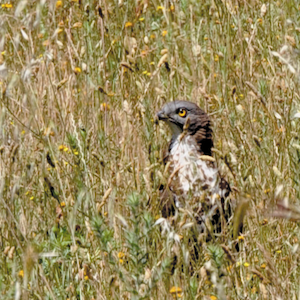Impact of hay mowing on the Stonechat Saxicola torquatus nestling

All claims expressed in this article are solely those of the authors and do not necessarily represent those of their affiliated organizations, or those of the publisher, the editors and the reviewers. Any product that may be evaluated in this article or claim that may be made by its manufacturer is not guaranteed or endorsed by the publisher.
Accepted: 3 October 2023
Authors
The impact of hay mowing on nestling Stonechats Saxicola torquatus was describes and quantified through the feeding activity of adults. Three breeding pairs (6 broods) were monitored. Occurrence of invertebrate taxa in the diet of nestling Stonechats was reported. The feeding frequency differs immediately after hay mowing (reduction up to 73%) to go back up after a few days even hunting different prey. The reduction of the feeding frequency does not appear to have affected reproductive success for the breeding pairs at least when the hay mowing takes place in limited and protected areas. The diet composition change with increasing nestling age, spiders and ants increase during the first days.
How to Cite

This work is licensed under a Creative Commons Attribution-NonCommercial 4.0 International License.







